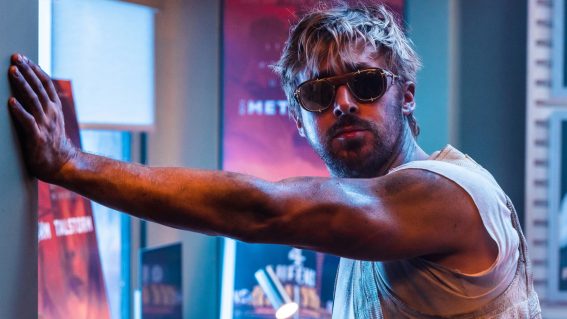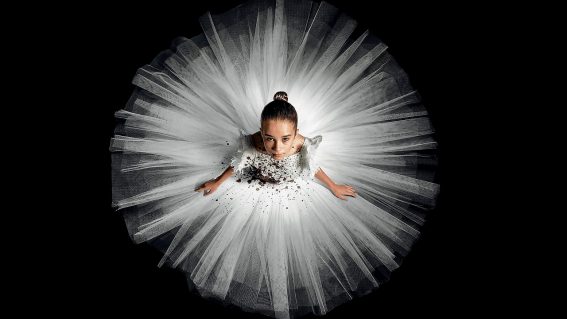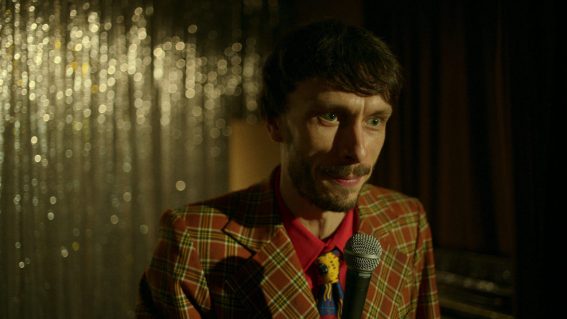Jurassic World: Fallen Kingdom review: uninspired sequel channels spirit of midnight movies

The Jurassic Park movies have always been coat hangers for special effects, ever since Steven Spielberg awed audiences with the sight of a John Williams-accompanied brontosaurus nibbling leaves in the rousing 1993 original. You could say a lot of other tentpole American blockbusters exist to showcase spectacular set pieces and digital whizbangery, but the feeling is rather pronounced when a story involves being hurtled between rides in a theme park: an amusement park captured on film, in the form of a series of amusements.
“No one’s impressed by a dinosaur anymore,” Claire Dearing (Bryce Dallas Howard) ruefully remarked in Jurassic World, which of course proved patently untrue. Not only are people still impressed by dinosaurs, they continue to flock to see movies about them that are virtual carbon copies of previous movies about them, which were not all that original in the first place. Jurassic World was a poor facsimile of Spielberg’s movie, with added transparent spinning ball things and a villain who wanted armies of velociraptors to fight for America – a kind of quasi-Bond bad guy gone safari.
Fallen Kingdom is a little different, albeit in ways that score no points for originality. Instead of being specifically reminiscent of previous installments in the franchise, it is generally reminiscent of countless midnight movies, typified by loopy plotlines and a kooky spirit of invention in the construction of creepy-crawlies. The film’s final act feels like a James Whale-directed Jumanji, an old mansion invaded by resurrected creatures machine-tooled to solicit hoots and squeals, closer to the gene pool of Sharknado than Spielberg.

The prologue takes place on an island, in night while it is raining, with rote dialogue such as “what is that?” and “confirm position!” before we catch glimpses of prehistoric beasts running, chomping and leaping from water. The island where the dinosaurs have been left to do their own thing (‘let’s just wait for all this to blow over’, the humans appear to have agreed) has a dramatically convenient volcano about to erupt. Claire is convinced the dinosaurs must be saved, even if the government – and more importantly, Jeff Goldblum, cameoing as scientist Ian Malcolm – disagree, blabbering about the natural order of things.
To participate in a rescue mission that will inevitably go awry, Claire recruits the velociraptor whisperer – his official job title is ‘wrangler’ – Owen (Chris Pratt). She interrupts Owen while he is building a lakeside house by hand, by himself, because manliness. Director J.A. Bayona and screenwriters Colin Trevorrow and Derek Connolly briefly flirt with an actual, ethical question that comes suspiciously close to suggesting the film might be about something. Is it right to save a formerly extinct species from going extinct again, when these creatures should never have been brought back in the first place?
The filmmakers run in the other direction, from ethics to egregiousness, combining dinosaurs and spewing lava in chaotic set pieces evoking 70s and 90s disaster movies (Dante’s Park? Jurassic Peak?). Fallen Kingdom chugs along with a ‘band back together’ vibe. But instead of reuniting actual people, it’s sensations, motifs and circumstances – captured in small moments of CGI-enhanced awe and big moments of CGI-slathered spectacle. ‘Gone horribly right’ is the umbrella trope of this franchise, reiterating that John Hammond’s dream of restoring dinosaurs to their former glory ultimately went all too well.
There is a quasi-catwalk, auction scene that could have made an inspired commentary on genetic engineering as a kind of fashion craze
It’s hard to imagine anyone (least of all the screenwriters) finding any of the first playbook-heavy half of Fallen Kingdom particularly interesting, but there are flecks of excitement. On the lava-coated island, one near-munching incident turns into a near-drowning, which becomes a ‘nearly killed by raining lava’ and finally a ‘nearly missed the only boat out of here’. The story’s chaotic sequencing distracts from the solid, crawling camerawork of cinematographer Oscar Faura, whose contribution is strong. Not enough to give the film real sense of style, but enough to provide visual clarity.
Almost the entire first hour could have been distilled into a punchy 10 or 15 minute prologue. The film loosens up as it moves into a messier but more interesting second half, containing – among other things – a wheelchair-bound James Cromwell performing an excellent “damn you!” at the climactic point of a tetchy dialogue exchange. There is a quasi-catwalk, auction scene that could have made an inspired commentary on genetic engineering as a kind of fashion craze. The fancy-dressed Dr Wu (BD Wong) considers making and mutating life a kind of art. It’s a shame this fabulous man – a solid addition to any cocktail or dinner party, surely – gets short shrift.
The auction element delivers an obvious, capitalist-themed through line to the original 1933 King Kong, which every creature feature and adventure film exists in the shadow of. This brilliant movie remains the best of both genres: so humane in its consideration of an animal, so eloquent in its assessment of human desire to turn natural things into legends, and legends into sideshows. In Kong’s view, and in Jurassic World’s, crass popular entertainment is fundamentally a matter of creators and consumers. The former is culpable for devaluing minds, the latter pitiable for their susceptibility. In both versions the house always wins. Beasts die and baddies get punished, but the next meaningless spectacle is always a sell-out.















